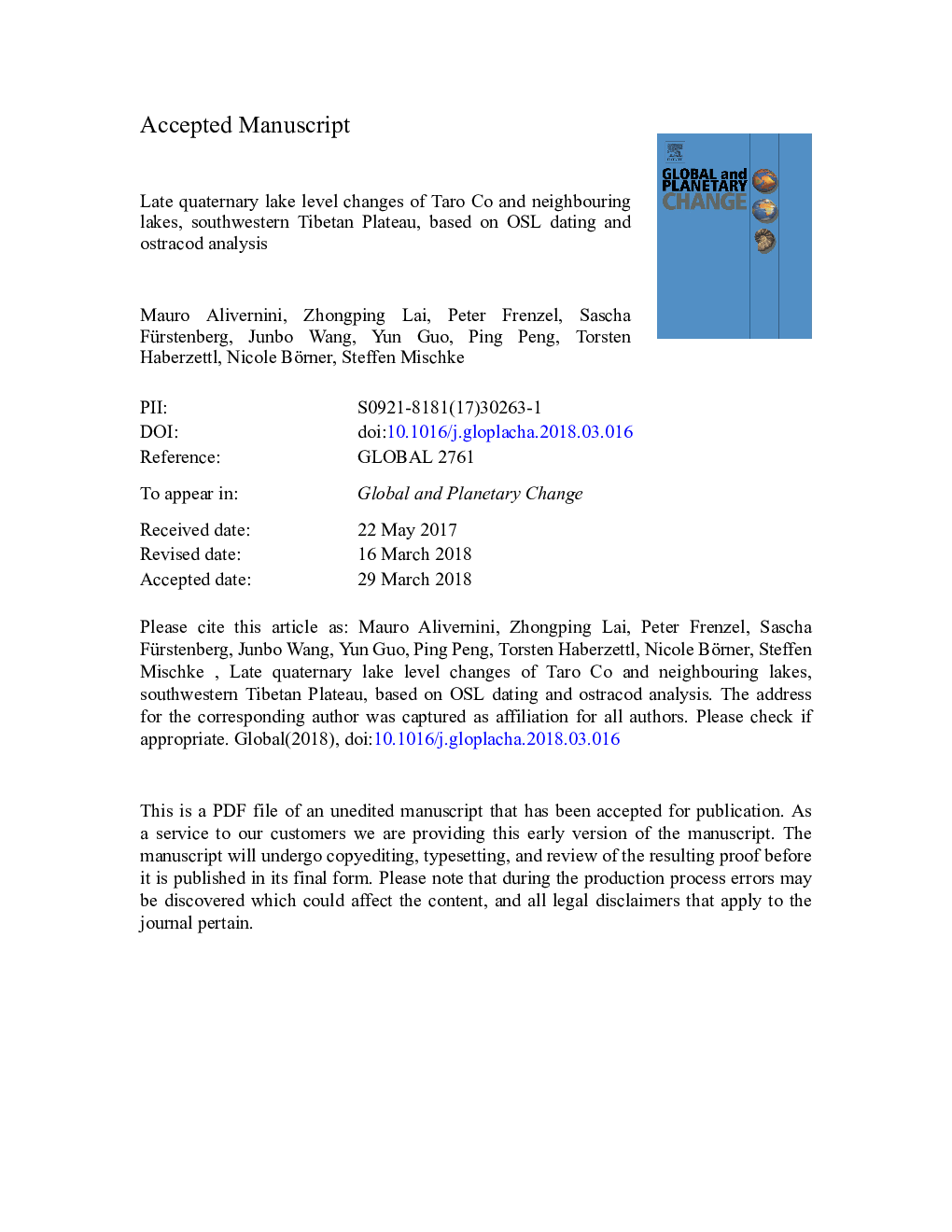| Article ID | Journal | Published Year | Pages | File Type |
|---|---|---|---|---|
| 8867471 | Global and Planetary Change | 2018 | 54 Pages |
Abstract
The Late Quaternary lake history of Taro Co and three neighbouring lakes was investigated to reconstruct local hydrological conditions and the regional moisture availability. Ostracod-based water depth and habitat reconstructions combined with OSL and radiocarbon dating are performed to better understand the Taro Co lake system evolution during the Late Quaternary. A high-stand is observed at 36.1â¯ka before present which represents the highest lake level since then related to a wet stage and resulting in a merging of Taro Co and its neighbouring lakes Zabuye and Lagkor Co this time. The lake level then decreased and reached its minimum around 30â¯ka. After c. 20â¯ka, the lake rose above the present day level. A minor low-stand, with colder and drier conditions, is documented at 12.5â¯cal. ka BP. Taro Co Zabuye and Lagkor Co formed one large lake with a corresponding high-stand during the early Holocene (11.2-9.7â¯cal. ka BP). After this Holocene lake level maximum, all three lakes shrank, probably related to drier conditions, and Lagkor Co became separated from the Taro Co-Zabuye system at c.7â¯ka. Subsequently, the lake levels decreased further about 30â¯m and Taro Co began to separate from Zabuye Lake at around 3.5â¯ka. The accelerating lake-level decrease of Taro Co was interrupted by a short-term lake level rise after 2â¯ka BP, probably related to minor variations of the monsoonal components. A last minor high-stand occurred at about 0.8â¯ka before today and subsequently the lake level of Taro Co registers a slight increase in recent years.
Keywords
Related Topics
Physical Sciences and Engineering
Earth and Planetary Sciences
Earth-Surface Processes
Authors
Mauro Alivernini, Zhongping Lai, Peter Frenzel, Sascha Fürstenberg, Junbo Wang, Yun Guo, Ping Peng, Torsten Haberzettl, Nicole Börner, Steffen Mischke,
